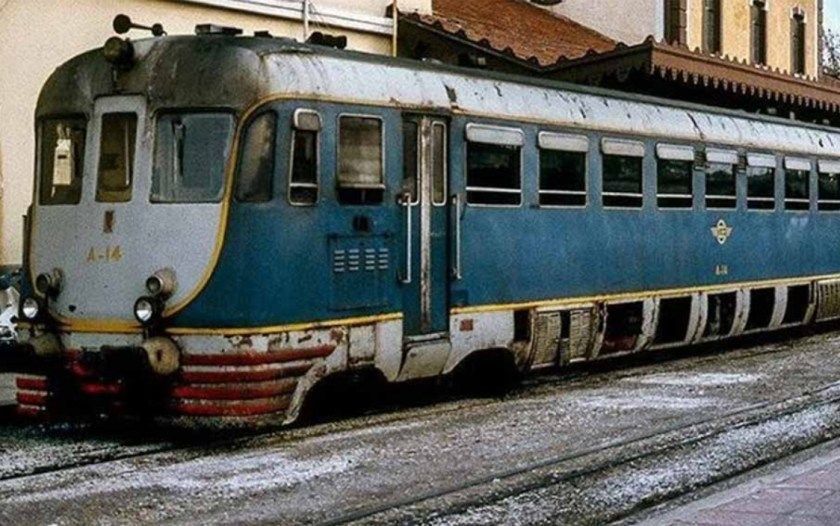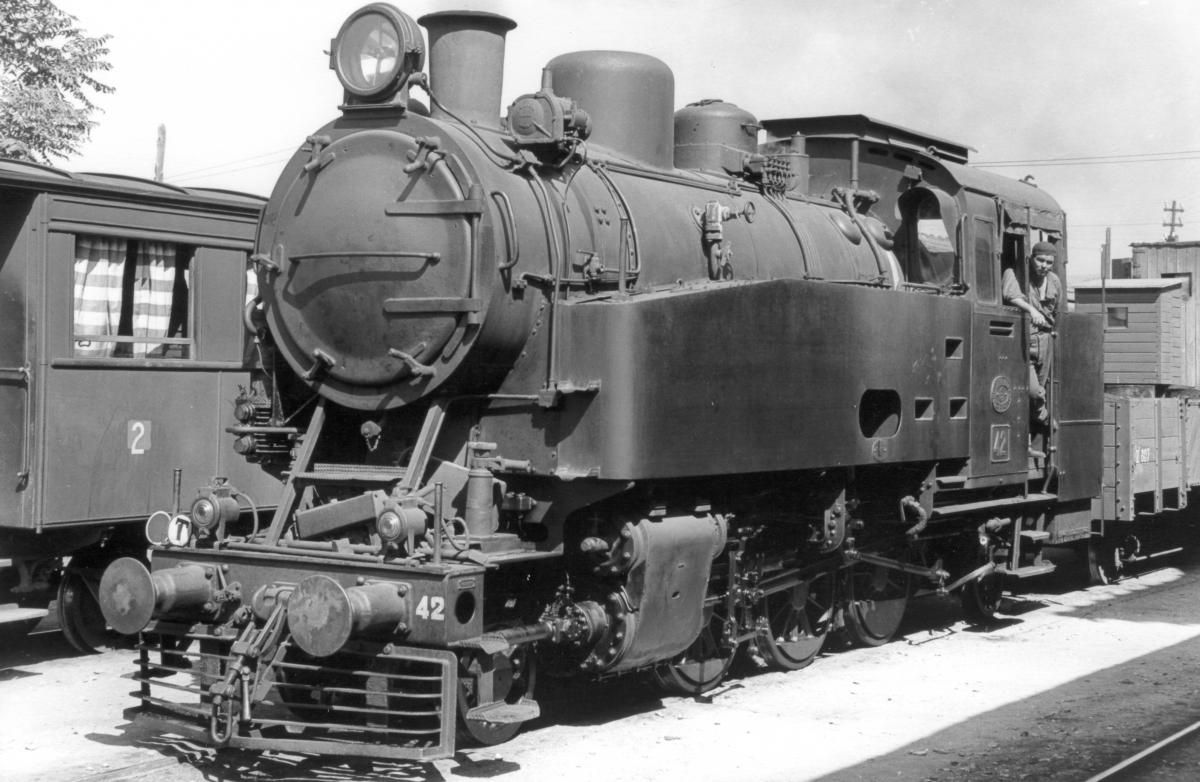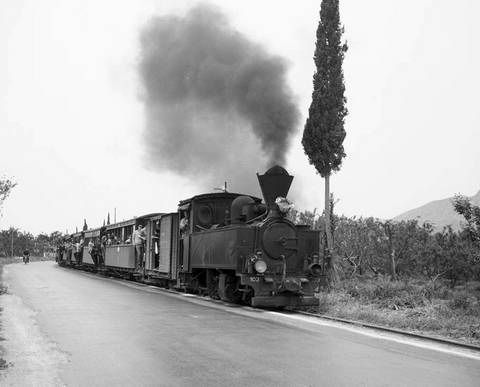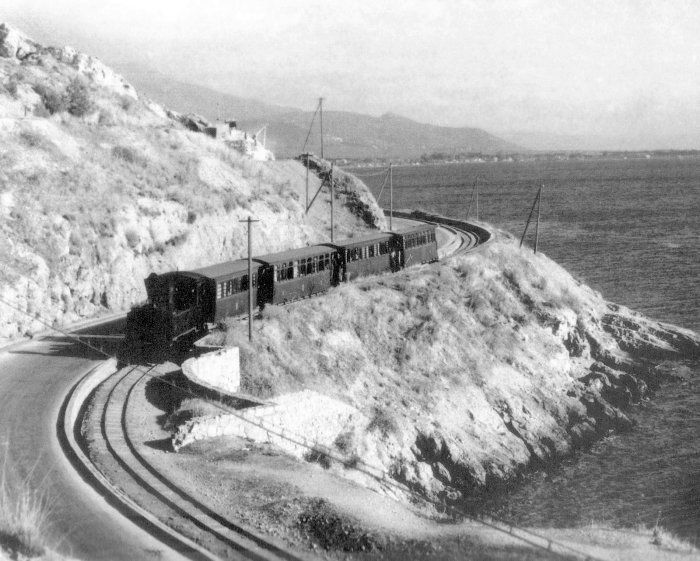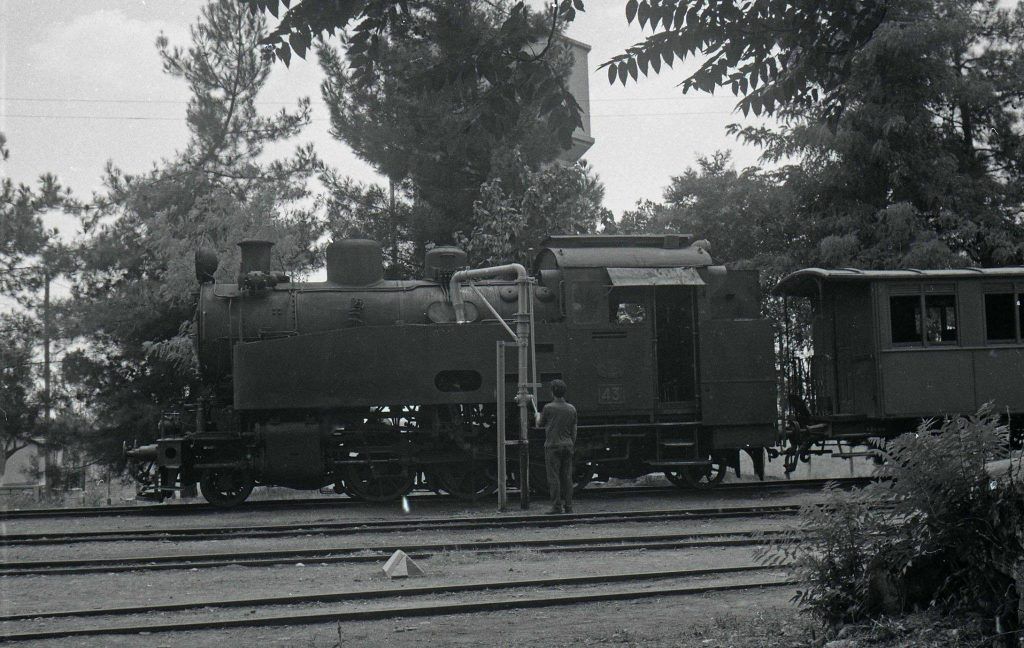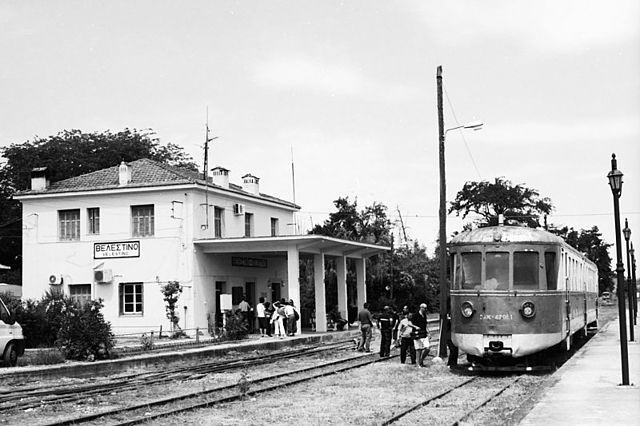New Paragraph
THE HISTORY OF THESSALY RAILWAYS
Volos – Paleofarsalos - Kalabaka
It was all initiated by an event of major importance for the Greek Kingdom. Greece grew in size as the region of Thessaly was then added to it. A village called Papapouli, north of Larisa city, was now the border separating the country from the Ottoman Empire. So, what was the new status Thessaly’s addition brought?
The Thessalian plain was and still is the main source providing agricultural products, such as grain, wool and tobacco. Its existence, along with Thessaly’s cities featuring significant local markets, cities like Volos, Larisa, Sofades, Karditsa, Trikala and Kalabaka and the industrial activity taking place in Volos’s harbour, created needs. The plain, cities and their local markets and industry now needed a reliable, cost – efficient and effective means of transportation, for people and commercial goods. The railways offered the ideal solution.
Next, let us take a look at how the line we are trying to preserve was born, the first of two lines of the Thessalian Railways network, the one from Volos to Kalabaka, as well as what major milestones it went past in its centuries long journey.
The line was born under Harilaos Trikoupis’s premiership. He is known as the ‘’father of railways’’ for Greece as well as a great modernizer politician. It was him who authorizes the contract for the line’s construction from Velestino to Kalabaka, connecting it to the Volos to Larisa line, also under construction at the time. Construction began under the law AMH’/22.6.1882. Co-leaders of the project were banker Theodoros Mavrogordatos and the chief engineer, Italian born, Evaristo De Chirico, father of the famous painter Giorgio De Chirico.
Construction was progressing rapidly, given the easily accessible lowlands which the line passed through. The gauge chosen for the line was the metric gauge (1000mm), mainly due to its lower construction cost per kilometre compared to the internationally used standard gauge (1435mm). In addition, no significant structures were necessary for the line’s construction, as it mainly crossed lowlands and plains, as mentioned before. Only nine bridges of rather modest size were required for it to cross over the rivers. The most important ones, in terms of size and architectural value, were the one in Drosero, spanning over Pinios river, Litheos bridge, near Kalabaka and the Enipeas river bridge.
The line reached Kalabaka, its terminal station, in June 16th 1886. It was now managed by the ‘’Thessaly Railways Company’’, founded in 1882, also managing the Volos – Larisa line. During the first year of operation, there were only two trains per direction and the entire journey was six hours thirty minutes long. Along with transporting passengers, the railway offered a logistics, door to door service from Volos port to Larisa, Karditsa and Trikala and vice versa. In addition, the railway also took over the postal service, after 1900, making it significantly more efficient and fast. Stations now also featured postal offices, where post stamps were sold.
The railway’s great value and importance for the region was proven in its second year of operation, in 1897. That year’s spring, a war began between Greece and Turkey. Numerous army personnel were transported between cities and to the border, to the battlefields, in close cooperation with the Greek Army. Passenger and freight coaches were converted in moving hospitals where the dead and injured were receiving care. Large amounts of ammunition were also transported via rail for the Greek Army and the Red Cross’s needs in battle. A noble initiative was also taken by the managing company to provide war refugees with shelter and food in the network’s stations. The entire war effort was organized rapidly, efficiently and in a great scale thanks to the railways. This would not have been possible if the state relied on the poor road network and transportation via animals available at the time.
This was the first, yet not the last time, the Thessalian Railways would struggle to cope with war damage. After a short time of poor Ottoman management, the railways fell back in Greek hands in July 1897 and their situation further improved after Volos’s liberation in March 25 1898.
Our next stop in this journey will be the year 1908. This was when the normal gauge mainline from Athens to Larisa was inaugurated, directly connecting the two cities. This brought a significant loss of passenger traffic to Thessaly Railways. From this point on and to the end of its commercial life, the Thessalian network would never relive the glory of its heyday. It will greatly suffer again during World War II yet it will once more recover from its ashes, continuing its operation, even if it was now shadowed by the new mainline.
The 1960’s were a crucial decade for the Thessalian network. First, it was merged with SEK (Hellenic State Railways) in 1955. Then, in 1960, comes the first huge negative impact, as the line from Volos to Larisa was converted into a standard gauge one. The once glorious metric gauge network was now surviving only in part, from Volos to Kalabaka only. Hard times were just ahead the line…
Passenger and freight traffic were decreasing gradually as cars and the rapidly growing highway network were dominating the scene. Infrastructure on the network was also aging, making matters worse. The last major upgrade for the line was the addition of new MAN 1/EN DMU type trains, from 1990 onwards.
The line’s death rattle came in 1998, where all operations on the old metric gauge line from Volos to Kalabaka are suspended, marking the end of the Thessalian Railways, after 112 years. But as life dictates, when something dies something else is born. In 2001, the new standard gauge line from Paleofarsalos to Kalabaka was inaugurated, connecting Athens to western Thessaly.
It has been wisely said that every end marks a new beginning. Thessaly Railways benefited the region and the country in many ways. This was not forgotten…we are here, striving to showcase the line’s importance, maintaining, improving and expanding it using all the means we have, never willing to let it be mesmerized. It is part of our history, our culture and industrial heritage…on this note, let us not forget that whoever is unaware of their past is condemned to repeat it…
Velestino 13 October 1888 - Velestino Railway Station Postmark
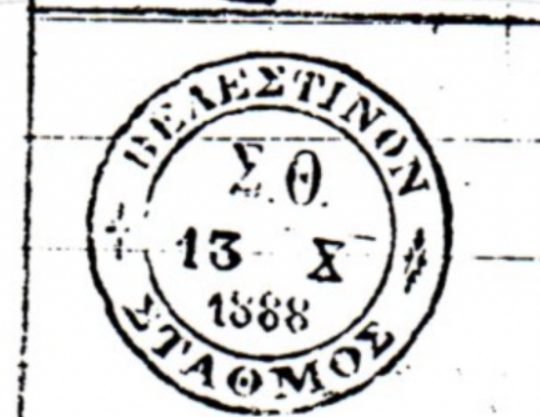
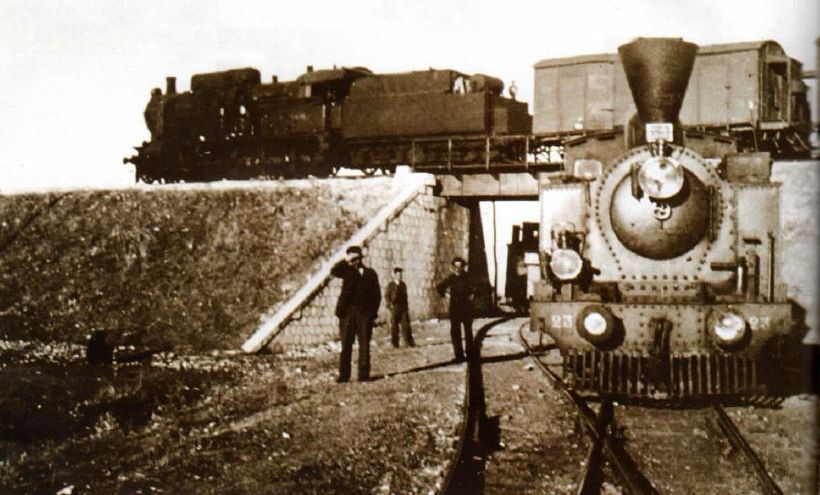
INTERSECTION OF METRIC AND STANDART GAUGE TRAINS OF THE THESSALY RAILWAYS AT THE RAILWAY STATION OF "STAVROS" ,PALEOFARSALOS
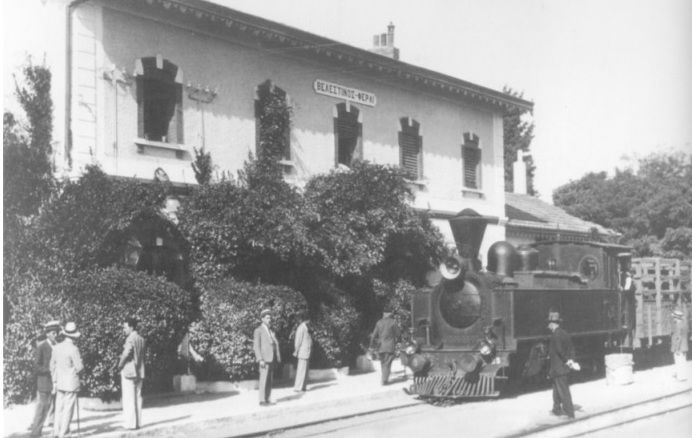
VELESTINO STATION (circa 1920)



